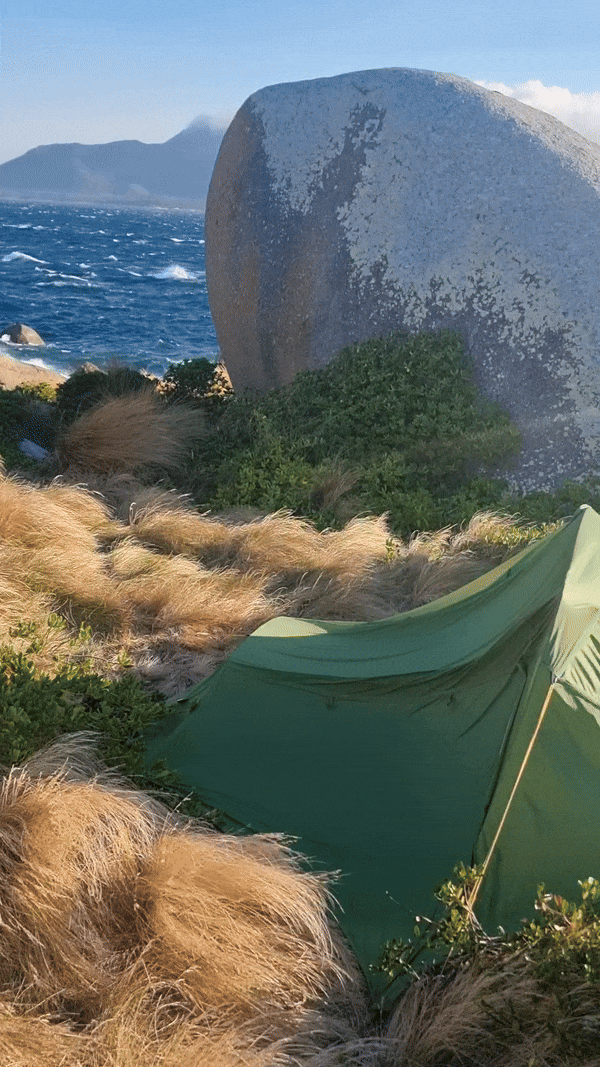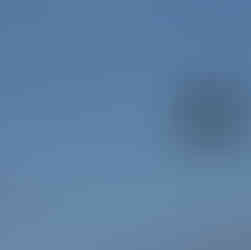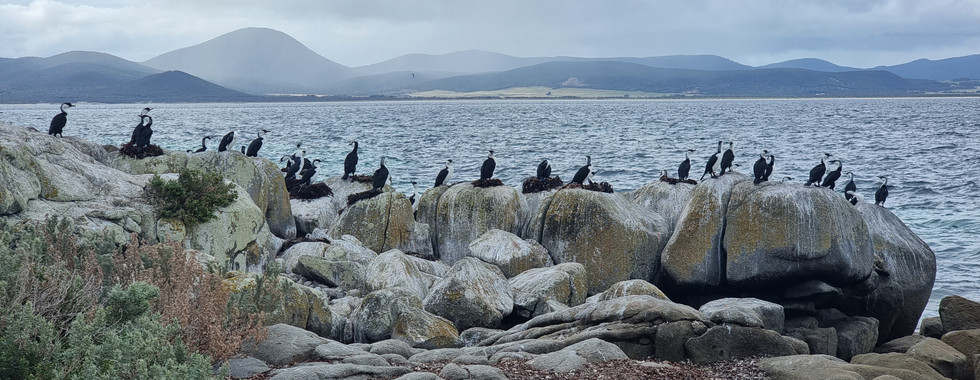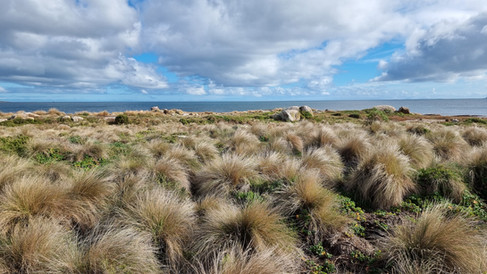Over the past few months, I've embarked on a journey across some of Tasmania's most isolated islands. These visits were part of my ongoing efforts to help manage invasive species and protect endangered bird habitat in this region in collaboration with local government authorities. Along the way, I've had the extraordinary opportunity to discover the incredible biodiversity and stunning landscapes that make these islands so special, yet perilously threatened by so many contemporary dangers.
A Symphony of Wildlife
On my first day on Bruny Island, the air was alive with the calls of various birds. As I walked along the beach, I spotted multiple white-bellied sea eagles soaring majestically overhead, their keen eyes scanning the waters below for fish. Nearby, a pair (or should I say a couple) of Cape Barren geese grazed peacefully, their lime-green beaks contrasting beautifully with their grey plumage.
As I ventured further, the sight of little penguins waddling ashore at dusk was truly magical (even if their incessant calls at 4AM in the morning weren’t). These smallest of penguins, also known as fairy penguins, never fail to enchant with their charming movements.
Exploring Coastal Treasures
Chalky Island's rugged cliffs and sheltered coves were next on my journey. Here, I encountered a diverse array of marine birds. The short-tailed shearwaters were nesting in burrows, creating a flurry of activity as they settled in for the night.
The coastal waters were teeming with life. Little black cormorants dived expertly for fish (or often just sunbaked on small rocky coastal outcrops), and fairy terns performed acrobatic dives into the sea, their elegant forms cutting through the air with precision.
The Hidden Gems
As I made my way to Oyster rocks (only about 100 m long at its widest part, and with not even one beach to speak of!), the landscape transformed into a haven for reptiles and invertebrates. Basking on sunlit rocks were metallic cool-skinks (the first time ever observed on the island), their shiny, metallic scales glinting in the light in the darker, more secluded parts of the island. Oh, and did I mention the relentless wind and rain with witch our main equipment tent (designed for more typical use as an alpine tent for somewhere like Mt. Eversest!) almost flew away by.

(this was when it was good weather!)
On the more diverse landscape of Roydon island, the tidal pools were a treasure trove of marine life. Starfish of various vibrant colours clung to rocks (including the Dwarf Cushion, Mosaic, and Spotted sea stars to name a few), while fish spat water at my camera (possibly a type of Filefish – TBD!), and curious cave crickets (Cavernotettix flindersensis) (endemic to neighbouring Flinders Island, and first time ever observed on this island) and forest scorpions scurried around my (apparently very attractive) tent.
The Beauty of Isolated Landscapes
The landscapes of Tasmania's islands are as diverse as the wildlife they support. From rugged cliffs and sheltered coves to pristine beaches, dense bushland and pitch-black (and sometimes luminous) skies, each island offered a unique environment to explore. The isolation of these islands has preserved their natural beauty, providing a glimpse into what untouched ecosystems can look like.
Bruny Island: Known for its stunning coastal scenery, teaming with many seals and sea lions, and lush temperate rainforests (gotta love the leeches!)
Chalky Island: A haven for seabirds and marine life with its rugged cliffs and sheltered bays
Wybalenna island: Known as a historically significant as the site where the Tasmanian Aboriginal community was forcibly relocated, it is also now home to the island’s first ever recorded White-Lipped Snake discovered by a friend (iNat user @roo_be)
Little Dog Island: Pristine beaches and dense vegetation (if the tussock grass natively found here wasn’t already hard enough to traverse through, the thousands of shearwater and penguin burrows certainly didn’t help, and that was always on top of looking out for snakes like the beautiful tiger snake) providing critical habitats for both birds and reptiles alike.
I look forward to continuing with the amazing people who do this work, sharing more photos of these beautiful islands, their habitats, and the incredible wildlife that call them home.





























































































Awesome blog! What an awesome adventure. Windy!